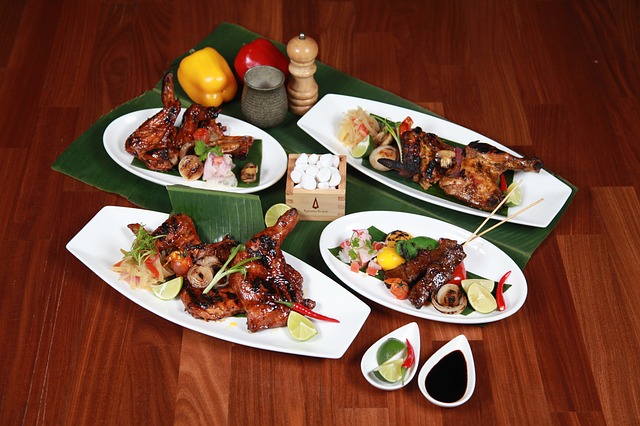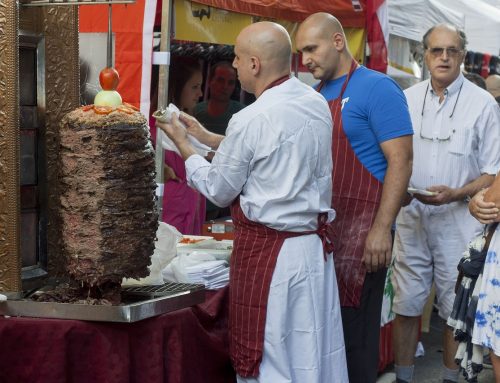Did you know there are an estimated 3.8 million Filipino Americans in the United States? In the coming decades, census experts anticipate this number to surpass well over 4 million. With increased awareness of Filipino people and culture especially in states like California, Hawaii, Texas, and New York where many of immigrated we expert increasing consumer demand for this culture’s cuisine.
Some of the most popular menus for a Filipino restaurant include Adobo, Sinigang, and Kare-Kare. But fusion concepts that combine traditional Filipino food with tacos can be popular in the United States as well. If you’re looking to improve the profitability of your restaurants menu, be sure to download our recipe cost analysis tool here.
One can easily see and taste the country’s various delicacies in its capital Manila, though it would be wise to visit the other islands and regions to fully grasp that distinct Filipino cuisine taste and style. If you’re planning to open a Filipino restaurant, be sure to take notes from this article for an abundance of ideas.
Filipino Restaurant Name Ideas

Planning to start a Filipino restaurant? Here are some of the best restaurant names ideas we could come up with in this group.
You Might Also Like: Small Restaurant Startup Costs Breakdown and Spreadsheet
- Thousand Islands
- Island Recipes
- Tropic Flavors
- Fiesta Dishes
- Seafood Isle
- Fresh Picks
- Tasteful Sense
- Global Cuisine
- Pinoy Select
- Street Picks
- Humble Beginnings
- Nightcap
- Jolly Jeep
- Eat Out Now
- Island Punch
- Tropical Shack
- Home-Cooked Diet
- Simple Dining
- Freedom Table
- Countryside Flavors
- After the Movie
- Masterpiece
- Rice Above
- Dish Plate
- Filipino Sandwich Co.
- Taste of the Philippines
- Filipino Eat Company
Pinoy Restaurant Name Ideas

If you want a more local sounding restaurant name, here are some Pinoy-themed restaurant name suggestions. If you’re not familiar with the names, you can always use Google Translate to learn their meanings. These will appeal to Filipino immigrants.
- Pedro’s Choices
- Kain Tayo
- Juan For All
- Lutong Bahay
- Binagoongang Lutuin
- Pagkain For Every All
- Sarsa
- Piyestang Bayan
- Lutuan
- Almusal Atbp.
- Hapag Kainan
- Pinggan
- Putahe
- Kainan sa Gulod
- Paborito
- Tambayan
- Manamnaman
- Mirindal
- Handaan
- Lasap
- Teleserye
- Kusinero
- Inang’s Diner
- Karinderya
Funny Filipino Restaurant Name Ideas

Filipinos are fun-loving people. Whatever problem faces them, they typically just laugh or smile at it. They also make fun of things around them. Here are some examples of funny Filipino restaurant names you can explore.
- Let’s Go Sago!
- Wait A Minute, Kapeng Mainit!
- Please Rice!
- Busog Lusog
- Stress Eating
- Ulam Na This!
- Budgetarian
- Buko Club
- MATH (Meryenda, Almusal, Tanghalian, Hapunan)
- One In A Melon
- Juice Colored
- Lutong Petmalu
- Luto ni Lodi
- Adobo Putoshop
- Bread Pit
- Lord of the Wings
- Starbuko
- SpotiFries
- Fish Be With You
- Pusit to the Limit
- Eat O’Clock
- Hipon Coming Back
- Chicha Hut
- Meating Place
List of Popular Filipino Restaurants

Some on this list, you may recognize, some you not. Here’s a list of popular restaurants in the Philippines. Most of these can be seen not just in the capital, Manila, but all over the country.
- Aristocrat
- Mang Inasal
- Chowking
- Jollibee
- Pancake House
- Barrio Fiesta
- Conti’s
- Gerry’s Grill
- Dencio’s
- Ineng’s
- Manam
- Max’s Restaurant
- Nathaniel’s
- Kuya J’s Restaurant
- Reyes Barbecue
- Mesa
- Razon’s of Guagua
- RACKS
- Bacolod Chicken Inasal
- Mom & Tina’s
- Lydia’s Lechon
- Banana Leaf
- Tapa King
- Congo Grille
- Mila’s Lechon
Popular Menus at Filipino Restaurants
Filipino cuisine is beginning to make its mark on the global food scene. Let’s explore some of the Philippines’ native cuisine to get ideas for winning menu concepts.
Related Reading: How I Opened a Restaurant with No Money and a 540 Credit Score
- Adobo. Considered the country’s national dish. It is said to have come from the Spaniards when they colonized the country. The dish comes from the word, Adouber, meaning to dress meat in spices or vinegar. You can use pork, chicken, seafood, or even vegetables as the main ingredient. Any of these are sauteed in vinegar, garlic, spices, or soy sauce to identify it as such. It’s a popular dish in whatever region you go to.
- Sinigang. Another popular dish from this tropical island. It’s a sour soup mainly because of its primary ingredient, which is tamarind. Unlike the Adobo, the main ingredients for this dish would typically be pork, beef, or seafood. Others use chicken, though it’s a little bit rare for this dish. Other ingredients that give its sour taste are guava, calamansi, or green mango. Garlic, onions, and tomatoes are added, along with other vegetables such as eggplant, okra, long beans, and radish among others.
- Kare-Kare. In English, the dish is known as Oxtail Stew. It is one of the popular Filipino dishes which is often seen and ordered among many traditional Filipino restaurants. It is usually prepared during special occasions only as preparing this dish is time-consuming. The dish is simmered in peanut butter which gives its nutty taste and yellowish brownish color. It is then finished off with eggplant, string beans, and bok choy. Kare-Kare is best served with rice along with its sauce called “bagoong”, a salty small fish concoction.
- Kaldereta. Also a popular occasional dish due to its preparation. Known in English as beef stew, it was traditionally cooked in a cauldron or caldera, a pot used for cooking stew, which is also where it took its name. The traditional meat used for this stew was goat meat, nowadays, Filipinos use beef as it is quicker to prepare and more palatable to the taste. Kaldereta is simmered in liver spread and tomato puree for hours, along with bell peppers and a tinge of soy sauce to give it an extra salty flavor. Alterations include cheese, potatoes, carrots, and green peas among other ingredients.
- Bulalo. This is a popular dish requiring lengthy preparation and cooking. In English, it’s known as beef marrow soup since it typically contains a large bone including its marrow. It is prepared with beef shanks with onions, peppercorns, garlic, and salt all boiled in water for hours. This is to make the beef as soft and as tender as possible as well as tasty to the palate. Vegetables like potatoes, corn, and cabbage are added as secondary ingredients to give it a more balanced taste. The best Bulalo dish is commonly found in the southern Tagalog province of Batangas since it is where most fine cattle are found.
- Sisig. This dish is not only popular among restaurants, but probably among pub houses. Other than being a popular dish, sisig is a good beer match, served with egg and seasoning. Originally coming from the northern province of Pampanga, this dish is a combination of cut-up pig’s cheeks, ears, belly, and snout. These are sauteed in onion, garlic, and vinegar and is usually served in a sizzling plate. Here in Manila, it started as a dish eaten while drinking beer and eventually transformed into a staple Filipino entree.
Learn more about the Philippines
The Philippines is an archipelago consisting of 7,107 islands. Surrounded by water, this archipelagic state has made this nation quite diverse in terms of customs and traditions. Only the large regions of Luzon, Visayas, and Mindanao associate certain places into the same subculture.
Attention Restaurant Owners: Sign up for our Food Business Startup Kit to get Exclusive Interviews, Food Business Model Canvas, and Other Tools
The country was discovered by the famed Portuguese explorer, Ferdinand Magellan, who ironically also met his demise on the same islands he discovered. Since then, the European explorers conquered the islands which led to 300 years of occupation, cementing their traditions into the country’s culture. After the Spanish occupation, the country was also governed by the United States in the 1900s, occupied by the Japanese in World War II, and eventually gained independence afterward. Despite these conquests, the Philippines considers its independence way back in 1898, before the Spanish colonial government relinquished its authority to the Americans around the same year.
This brief scenario gives you a glimpse of how diverse Filipino culture is. Practically, the country is influenced by major cultures and traditions but mainly the Spanish, American, Japanese, as well as Chinese cultures. This despite the country having its own local cultures, the country is known to be the “Melting pot” of various cultures.




